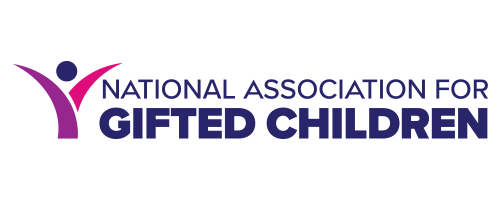Circling Back to Emotions
By Megan Parker Peters
It is not news that gifted students have social-emotional needs. Yes, the research is debatable concerning whether these needs are greater or different from those of typically-developing peers. Nonetheless, social emotional needs are present in gifted children and should be supported as needed in conjunction with the development of their advanced intellectual potential, mirroring Standard 1 from the NAGC Gifted Programming Standards. In NAGC’s P-12 standards, it is noted repeatedly in the components of standard 1 that students should gain self-understanding, an awareness of their needs, and exhibit cognitive, psychosocial, and affective growth through evidence-based practices.
Since the time of COVID, there has been a rise in interest and awareness of social emotional needs for learners. We do not yet know the full and lasting impacts of the pandemic, but this moment has magnified existing needs and uncovered potential new affective needs. First, I want to point to the NAGC Timely Information for Parents (TIP; 2020) sheet developed for supporting students during COVID-19. Yes, the pandemic is officially completed, but the losses of academic exposure and social-emotional development linger on. This TIP sheet includes web and print resources for families, educators, and students to manage anxiety, discuss tough topics, and manage crisis situations. In addition, the TIP resource provides developmentally-appropriate suggested actions for families based upon children’s exhibited behaviors for ages 3-19. This is a valuable resource that will live and have value long beyond the memory of the pandemic.
It is also ever more important to support gifted students to talk about and be aware of their emotions, again supporting the NAGC Programming Standard 1 for students to more effectively be aware of and understand their emotions. In 2019, my colleague Emily Mofield and I developed the CHECK model and published an article in Parenting for High Potential to describe the model. The acronym CHECK stands for Control vs. Not Control, Hear what your child is saying, Emotional awareness, Challenge thoughts, and Know a plan. By following the guidance in these steps, families and educators are able to support gifted students to continue to develop their emotional awareness and emotional intelligence, which will provide greater support for the continued development of their advanced capabilities. Gifted students benefit when they use their advanced metacognition to better understand and predict emotions and associated behaviors. Understanding emotions allows gifted children greater understanding of how they react to emotionally-charged or precipitating situations so that they can better plan and predict how emotions could hinder or facilitate greater growth towards a goal.
Social-emotional needs are not going away. We need to equip gifted students with tools to continue on the road to excellence. Use these resources to support the gifted students in your lives.
Resources:
-
Mofield, E., & Parker Peters, M. (2019). Being Mindful of Emotions: CHECKing in on Your Child's Emotional Intelligence. Parenting for High Potential, 8(3), 11-15.
-
National Association for Gifted Children. (2019). Pre-K-Grade 12 Gifted Programming Standards. Retrieved from https://http://www.nagc.org/. Copyright 2019 National Association for Gifted Children. For permission to print or distribute this report, please visit https://nagc.org/page/publications
-
National Association for Gifted Children. (2020). COVID TIP Sheet. Retrieved from https://cdn.ymaws.com/nagc.org/resource/collection/1A7A020E-2678-4FE3-9DDD-1452520DA6C5/NAGC-TIP_Sheet-COVID_19_English.pdf


